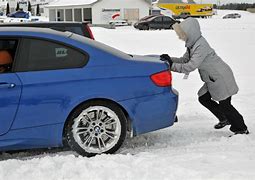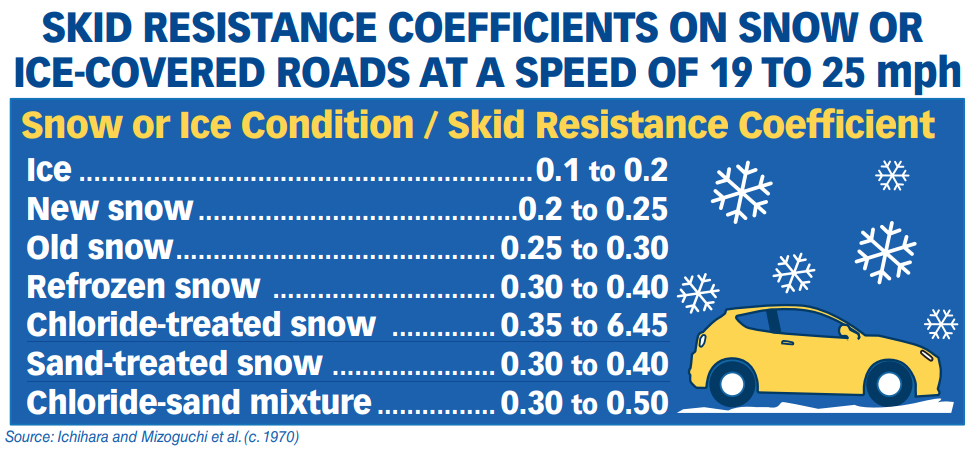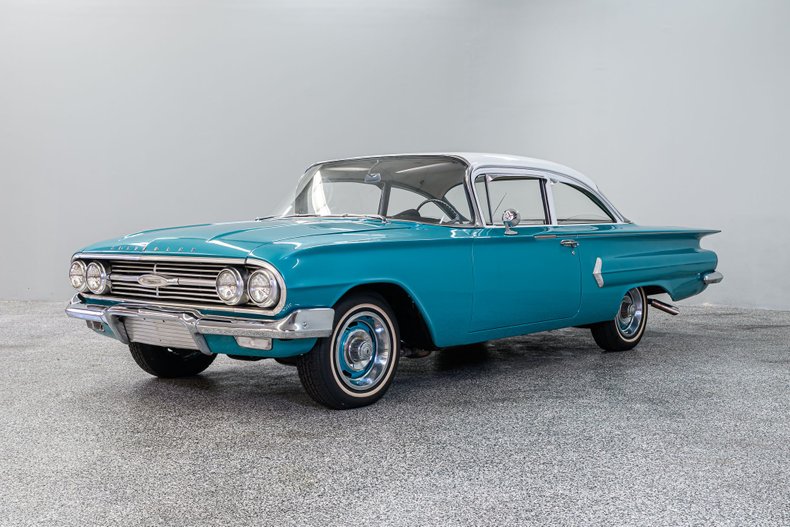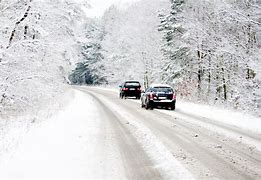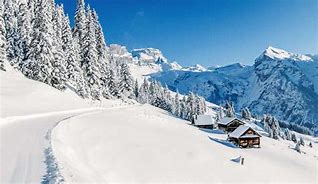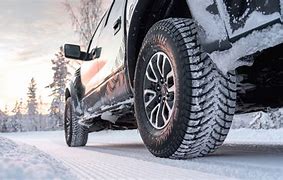
|
B arry's
Tire
Tech This is a series of articles on the technical aspects of tires, their care and usage. My primary purpose in these articles is to help people understand tires and thereby reduce the risks we all face every day. ..........and since tires is just about the only thing I know about.......... Please drop me a note if you have a topic you want to see: Barry@BarrysTireTech.com |
|
Winter and All Weather Tires: Updated Apr, 2024 In the Apr 8, 2024 issue of Tire Business, a trade magazine for the tire industry, there was an article indicating that "The Wheel Group", a company in California which distributes tires, has halted sales of its AMP brand non-mud-terrain tires because they didn't meet the US and Canadian standards for the Alpine symbol (aka 3PMSF). The tires did meet the European standard. As noted below, there are 2 tests that can be used for the symbol. What I didn't know was that the US and Canada don't approve of the ABS braking test (aka UN ECE R117) . They only accept the ASTM F-1805 test. Interestingly, they tested the tires using F-1805 and they failed! Apparently, they are planning on recalling the tires. I updated the text below to reflect the fact that the US and Canada only accept the ASTM test. Revised Sep, 2023 I found a chart on snow traction. I also found a copy of F-1805 and it included a chart showing the coefficient of friction for the SRTT for various surfaces. Update: Nov, 2022 3 items:
What you should get from this page:
Please Note: I am only going to talk about passenger car tires. I am not going to talk about Light Truck and Truck/Bus tires (sometimes referred to as Medium Truck tires) which are also covered by test methods to get the Alpine symbol - but their criteria is slightly different. I am also not going to talk about studded tires. I have very little experience with studded tires. But here's a link to a Wikipedia article on snow tires that has information about studded tires and where/when they can be used: Wikipedia: Snow Tires I am also not going to talk about tread depth vs snow traction and ice traction. I am trying to find some suitable graphs that show that snow traction decreases as a tire wears. Same for ice traction. When I do, I'll include them on this page. Until then, most sources claim that 5/32nds of an inch (4mm) is when winter tires should be removed and I see no reason to amend that. I've seen a couple of places where 7/32nds (5.5mm) is recommended - among these is Transport Canada. I haven't seen any place that comments on tread depth and ice traction. Obviously smooth is bad, but one would think that snow traction gets bad sooner than ice traction. I hope to find data to support that. |
|
To the right is the 3MPSF (3 Mountain Peaks, Snow Flake) symbol, also known as the Alpine (pronounced al-peene) symbol. EVERY Winter tire has to have this symbol. It means the tire has passed a certain snow traction test (either ASTM F1805 or UNECE R117). For the ASTM F1805 test, the traction value must be 12% better than the new SRTT (Standard Reference Test Tire) - it used to be 10% for the old SRTT. For the UNECE R117, the value is 7%. If the tire doesn't have this symbol, it can't be considered a "Winter" tire. Please note: I am going to use the term "Alpine Symbol" from this point forward. I think it is easier to use than 3MPSF. |
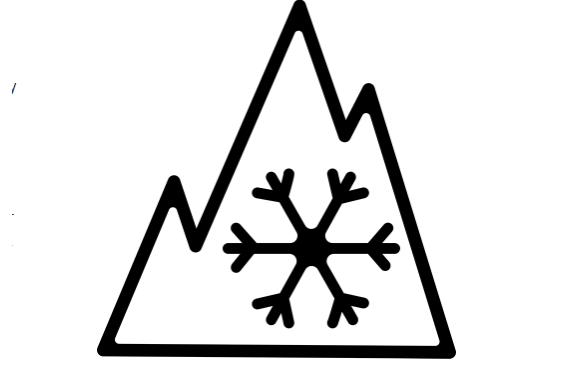
|
|
The Test: ASTM F1805 In February, 1999, the RMA (now the USTMA - US Tire Manufacturers Association) and the Rubber Association of Canada (now TRAC - Tire and Rubber Association of Canada) jointly announced an initiative to provide a way to easily distinguish winter tires, based on a request from the Canadian government. This had been in the works for several years before the announcement The ASTM = American Society for Testing and Materials (Now called ASTM International) published the test. They publish tests and test standards for many industries, including the automotive (and therefore tire) industry. Note: The truck to the right is an old instrumented truck where the right rear position is instrumented. Crude, but effective! The test is an acceleration test conducted on a prepped snow surface. |
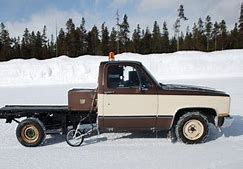
|
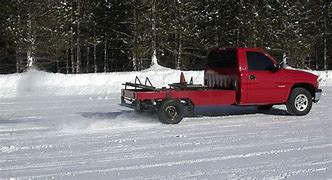
|
Yes, the snow is prepared! And there are specs the prepped snow has to have! That is why it took so long to develop a snow traction test. It is reported (but refuted) that Eskimos have 50 words to describe snow. Is snow dry and powdery, or wet and slushy? That is a problem when you are trying to test tires in snow. The good news is that the prepped snow is reproduceable. This is a major reason why it is done this way. |
|
The test measures the peak traction during acceleration. I assume they did not chose a braking test because the snow might pile up in front of the tires and affect the results. While the result is a traction number, snow traction testing is so highly variable that the results are compared to the SRTT (Standard Reference Test Tire). That means that every test has to include an SRTT in the mix and there is part of the procedure that deals with how that is done. To get the symbol, the tire being tested must exceed the traction of the old SRTT by Why |
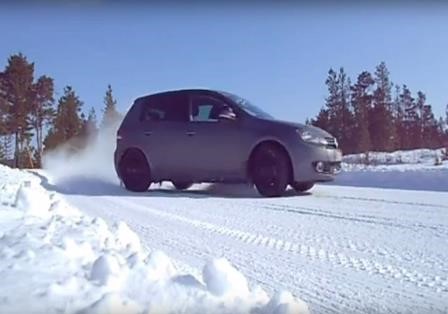
|
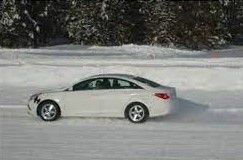
|
The Other Test: UN ECE R117 In May of 2021, the EU (European Union) changed their regulations for tire labeling, and part of that change included adding the Alpine symbol. They also added an ABS braking test with an acceptance level of 107% of the new SRTT. All 4 tires have to be the same - unlike F1805 which uses one tire. The test is conducted from 25 kph to 10 kph (15 to 6 mph). |
|
Update Apr, 2024 Apparently, the US and Canada don't accept the European test (UNECE R117) by itself. To get the designation in those 2 countries, the tire MUST pass the ASTM F1805 test - unlike the regulations in Europe (and elsewhere?) where the tires must pass either test. There is at least one situation where tires passed the European test but not the US/Canadian test. So if you aren't in the US and Canada be aware of this! |
|
There is no ice traction standard to get the Alpine symbol. That's because, at the time, there wasn't a good way to test on ice. That has since changed. |
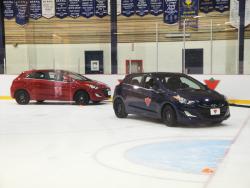
|
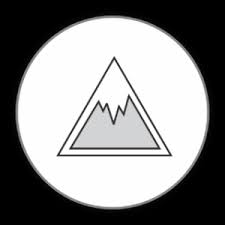
|
To the left is the "Ice Grip Symbol" that was created by the May, 2021 revision to the EU regulations on tires. I've heard it called the "Nordic Symbol", but that doesn't seem to be common usage. (Yet!!) Much like the Alpine symbol, this symbol requires passing a test, which consists of braking on a smooth ice surface, indoor or outdoor, and the results are compared to the SRTT. (Have you noticed how often the SRTT appears in tire testing?) The test is ISO19447. Initially, the regulations didn't specify a criteria, but that has changed. According to the latest ads from Nokia, the threshold is 118% of the SRTT - and the test is very similar to the braking test on snow. It is my understanding that tires that do well on this test do not do well in the wet traction part of the EU regulation, so it is intended that tires with this symbol are only suitable for Nordic countries (Norway, Sweden, Finland, etc.). I can not help thinking there are other places where tires of this sort might also be useful (I'm looking at you, Canada!), but I have not heard of any movement in those locales. |
|
ALSO: Winter tires will NOT have UTQG ratings. They are exempt! So no treadwear ratings, nor traction ratings (except for the EU ratings). All Weather tires are not exempt since they are basically enhanced All Season tires |
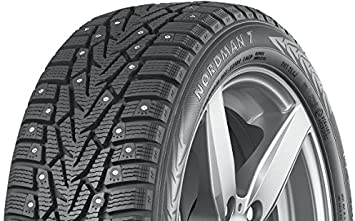
|
The Science:
Snow traction is mostly about edges - and that means lots of sipes (Paddle wheel effect). Notice all the sipes in the photo to the left. If you remove those sipes (and the studs!), you get an all season pattern! Tread compound? Has to be soft at winter temperatures - which means it is too soft for summer. That means that winter tires are NOT suitable for summer usage. I do not subscribe to the hydrophobic/hydrophilic (water attracting) theory of tread compounding. I think that is mostly marketing hype. Rubber is a hydrocarbon and so is oil - and we all know about oil and water. |
|
What about All Weather tires? They would be compounded for higher temperatures, which goes back to edges! All Terrain tires? They pass the test just due to their tread pattern. |
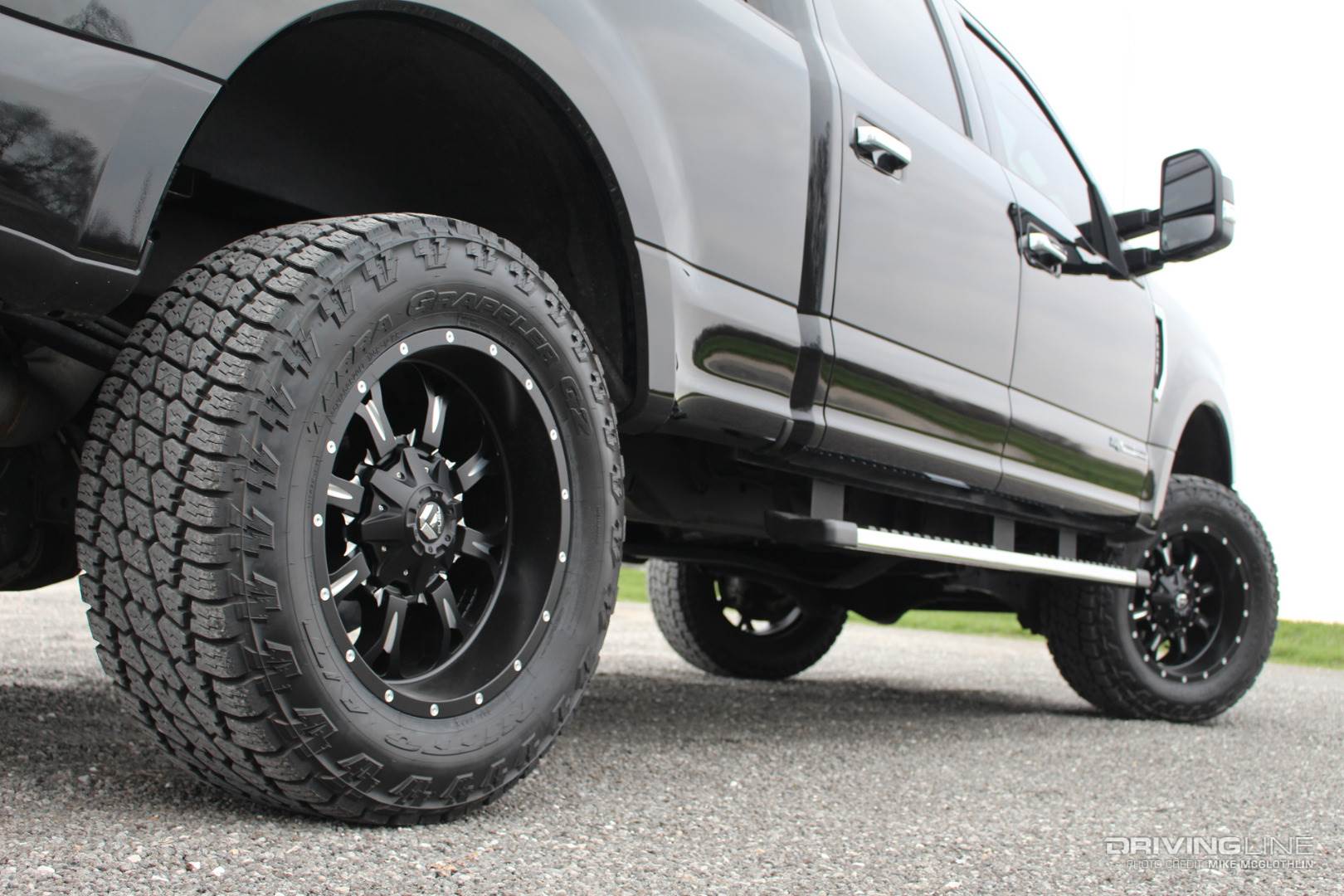
|
|
|
|
To the right is a screenshot of part of the F1805 test standard showing a table that has coefficients of friction for the SRTT on various surfaces. Here's the whole standard: ASTM F-1805 |
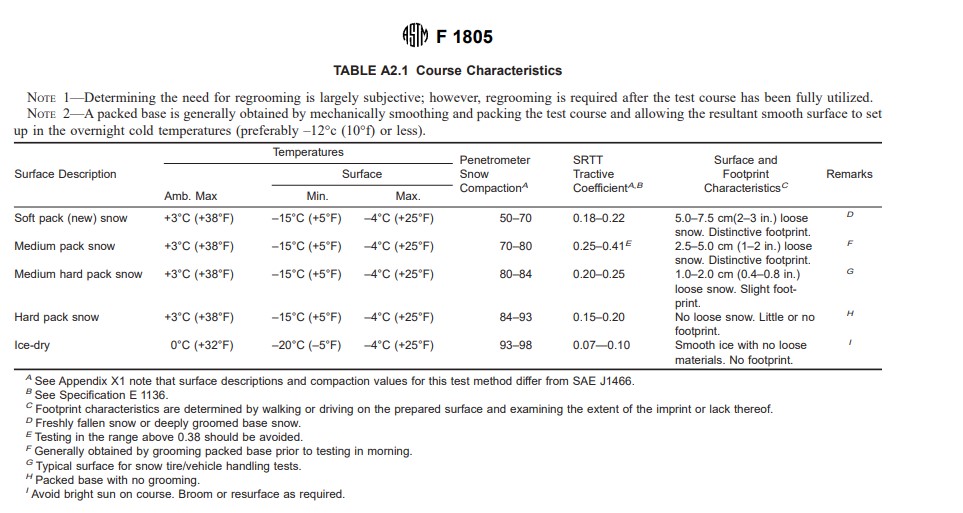
|
|
Here's the SRTT data from that table:
Note: Medium pack snow has the best coefficient - and it's larger than soft pack snow! But as the snow gets more packed, the lower the coefficient. End Sep, 2023 Revision |
|
At the time, snow traction testing was in its infancy - not reliable and not repeatable. So the RMA (Now the US Tire Manufacturers Association) created a verbal description of what an All Season tire was and allowed tire manufacturers to use the letters "M" and "S" with some sort of divider between those letters, such as "-" , "/", "+", etc. You can see that today on all All Season tires. Here's a link to the verbal description of what is required to get the "MS" symbol: USTMA Snow Tire Definitions for Passenger and Light Truck Tires What I find interesting is that in spite of the shortcomings of the "MS" symbol, snow tires basically disappeared from the market for about 20 years (except for a few locales). Over the years, consumer's expectations for snow traction has grown - as well as the tire manufacturers ability to deliver better snow traction. Needless to say, the "MS" designation just doesn't work anymore. |
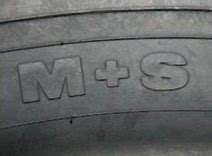
|
|
HOWEVER, time has proven that this is also to be inadequate. Not only are too many non-winter tires able to pass the test - much to the chagrin of the Canadian government - but tire manufacturers have improved snow traction even for winter tires. An attempt was made to expand the Alpine symbol to including a rating system for both snow and ice traction, but what is needed for ice traction is quite different than snow traction, so it was abandoned. |
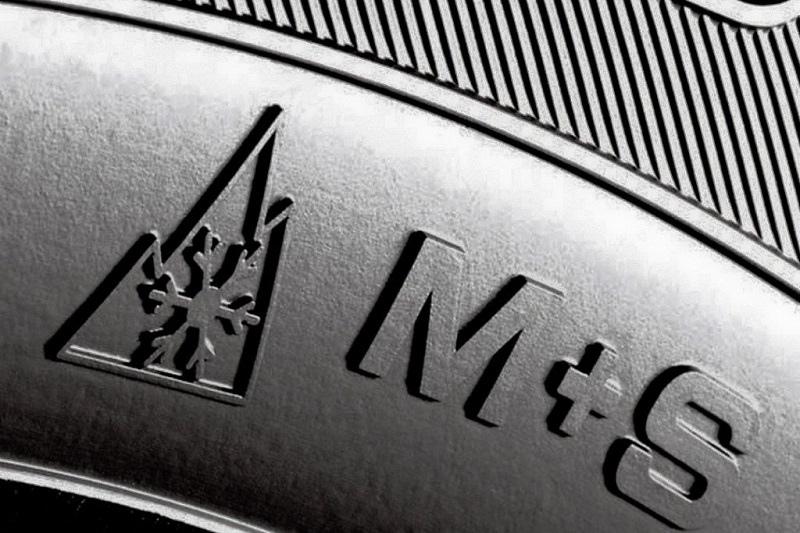
|
|
Update Nov 2022: I found an EU Tyre Registry that has the tire labels. However, they are not summarized. You have to look at each label individually: Update Jan 2024: I stumbled across an article from Consumer Reports that says that All Season tires lose 14% of their snow traction when half worn: Consumer Reports: Make Sure Your Tires Have Enough Tread for a Snowy Winter They also report that there is only a little degradation in ice traction for half worn All Season tires. |
|
Update Mar, 2024: One of my favorite YouTube channels is Tyre Reviews with Jonathon Benson. He did a test of 5 different tires at different temperatures, trying to establish if the quoted 7°C crossover point was true. (Hint: He did!) But there was one graph that jumped out at me - and it was the one where he verified the 7°C crossover temperature: 
Notice that there is group of 3 tires at the bottom that are more or less behaving the same, and 2 tires doing something else. In particular the Summer tire was pretty bad for wet braking at cold temperatures (as expected), but got better as the temperature went up. But the Nordic tire was bad and stayed bad! At least for wet traction. This testing was done before the Ice Grip (Nordic) Symbol was used on production tires, but this seems to verify that wet traction is indeed an issue for these types of tires. I wonder what is going to happen in North America when the symbol becomes common - in particular, will Nordic tires get a reputation of having wet traction issues and thereby hurt sales. Here's a link to the video: |
|
|
